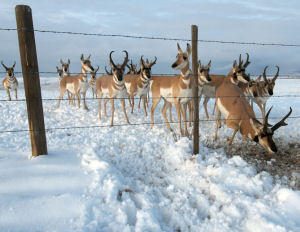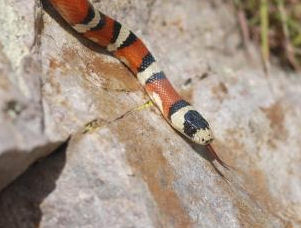
The decimation of “apex” predators such as wolves, cougars, lions or sharks has led to a huge increase in smaller “mesopredators” that are causing major economic and ecological disruptions, contends a new study in the journal Bioscience.
The study found that in North America all of the largest terrestrial predators have been in decline for the past 200 years while the ranges of 60 percent of mesopredators have expanded. The problem is global, growing and severe, the researchers say, with few solutions in sight.
“This issue is very complex, and a lot of the consequences are not known,” said William Ripple, a professor of forest ecosystems at Oregon State University. “But there’s evidence that the explosion of mesopredator populations is very severe and has both ecological and economic repercussions.” Ripple cites Africa as an example. Lion and leopard populations have been decimated and regions are experiencing a surge in the “mesopredator” population next down the line – baboons. In some cases, children are now being kept home from school to guard family gardens from brazen packs of crop-raiding baboons.
“I’ve done a lot of work on wildlife in Africa, and people everywhere are asking some of the same questions, ‘what do we do?'” said co-researcher Clinton Epps. “Most important to understand is that these issues are complex, the issue is not as simple as getting rid of wolves or lions and thinking you’ve solved some problem. We have to be more careful about taking what appears to be the easy solution. The economic impacts of mesopredators should be expected to exceed those of apex predators in any scenario in which mesopredators contribute to the same or to new conflict with humans. Mesopredators occur at higher densities than apex predators and exhibit greater resiliency to control efforts.”
Key findings of the study include:
- Primary or apex predators can actually benefit prey populations by suppressing smaller predators, and failure to consider this mechanism has triggered collapses of entire ecosystems.
- Cascading negative effects of surging mesopredator populations have been documented for birds, sea turtles, lizards, rodents, marsupials, rabbits, fish, scallops, insects and ungulates.
- The economic cost of controlling mesopredators may be very high, and sometimes could be accomplished more effectively at less cost by returning apex predators to the ecosystem.
- Human intervention cannot easily replace the role of apex predators, in part because the constant fear of predation alters not only populations but behavior of mesopredators.
- Large predators are usually carnivores, but mesopredators are often omnivores and can cause significant plant and crop damage.
- The effects of exploding mesopredator populations can be found in oceans, rivers, forests and grasslands around the world.
- Reversing and preventing mesopredator release is becoming increasingly difficult and expensive as the world’s top predators continue to edge toward obliteration.
“These problems resist simple solutions,” Ripple said. “I’ve read that when Gen. George Armstrong Custer came into the Black Hills in 1874, he noticed a scarcity of coyotes and the abundance of wolves. Now the wolves are gone in many places and coyotes are killing thousands of sheep all over the West. We are just barely beginning to appreciate the impact of losing our top predators.”
Related:
Predator-prey relationships a key driver in nature’s synchronicity
New doomsday map shows planet’s dire state
Species Extinction Threat Vastly Underestimated
Parasite puzzle: scientists mull coextinction conundrum


















Comments are closed.